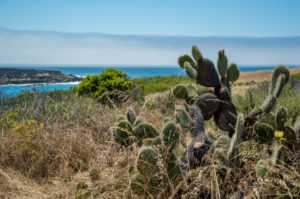Act Now: Urge Your Congressmember to Protect the LWCF!

The LWCF has been utilized to improve numerous California state parks such as Montaña de Oro pictured here.
Washington, D.C. — A popular 1965 law that has provided critical funding for over 125 parks, forests, monuments, wildlife refuges, and reserves across the Central Coast is set to expire at the end of this week. Congress is currently debating whether to reauthorize the Land and Water Conservation Fund (“LWCF”) and does not appear poised to consider legislation to extend it before the law’s September 30 expiration date.
The LWCF is one of America’s most important public land conservation programs, supporting more than 41,000 parks and projects across the country. The LWCF has supported over 200 projects throughout Kern, Monterey, San Luis Obispo, Santa Barbara, and Ventura counties since it began in 1965. Iconic public lands such as the Big Sur area of the Los Padres National Forest, Carrizo Plain National Monument, Bitter Creek National Wildlife Refuge, Channel Islands National Park, Montaña de Oro State Park, and dozens of other local parks have received over $35 million for land acquisitions, facility developments, and park improvements. See the interactive map below to view the more than 200 LWCF projects that have been implemented along the Central Coast.
“The LWCF supports critical programs that help underserved and urban communities get outside to hike, camp, fish, play sports, enjoy time with their families, and enhance their cultural heritage,” says Graciela Cabello, Director of Youth and Community Engagement at Los Padres ForestWatch. “Allowing this fund to expire will effectively block access to outdoor recreation for generations.”
The LWCF receives near-universal public support. Throughout its 53-year history, the LWCF has helped communities and state agencies acquire or gain access to nearly seven million acres of land for public use and recreation, from urban parks to remote wilderness preserves. It is primarily funded through offshore oil and gas revenue and matching grants which federal, state, and local governments use to buy land, water, and easements for the benefit of all Americans. If the bill is not reauthorized, the revenue will be appropriated by the general treasury. Projects that have already secured funding would continue, but future projects like new parks and trails, playground and picnic area construction and maintenance, beach and fishing access, and more would be jeopardized.

Pronghorn on the Carrizo Plain National Monument — which has acquired hundreds of acres land thanks to the LWCF — during the 2017 Superbloom. Photo by Patti Gutshall.
“Many of our national monuments, wildlife preserves, and parks owe their existence to the LWCF,” says Rebecca August, Public Lands Advocate for Los Padres ForestWatch. “If Congress does not renew the act, we will lose a critical tool to build upon our region’s rich heritage of public lands, and over time we risk degrading proper maintenance, protection, and access to our parks and open spaces. Trails will erode or become overgrown, campsites, park facilities, and roads and bridges will fall into disrepair, all of which make our parks and wild places less safe and accessible to the public.”
Nonprofit conservation organizations throughout the country are urging the public to contact their Congressional representative and tell them to act now to reauthorize the LWCF for the future of our local parks and public lands. Join the effort by sending a letter to your member of Congress at LPFW.org/LWCF.







Comments are closed.